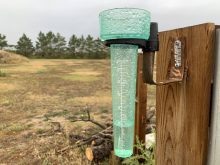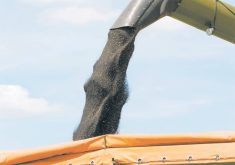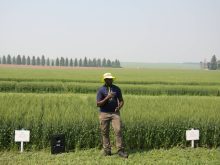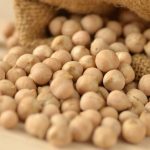Large portions of Canada saw above-normal levels of precipitation in October, resulting in a moderate improvement in drought conditions.
The biggest beneficiaries in Western Canada were coastal and western British Columbia, the northern Prairies and southern Manitoba.
Most of the Prairies received normal to above normal precipitation as the result of several large storm events. Northeastern Alberta, central Manitoba and eastern Manitoba all recorded more than twice the normal October rainfall.
Read Also

Farmers left waiting on rural crime
RCMP say they’re working to curb rural crime on the Prairies, but response time realities and continued reports of incidents remain a frustration for farmers and other residents.
WHY IT MATTERS: Drought monitors allow for long-term analysis of moisture conditions in Canada and enables long-term planning and research for agricultural producers.
Coastal British Columbia continued to receive well above normal precipitation through October, resulting in improved soil moisture, stream flow and surface water supplies. Drought status was ended for all regions on Vancouver Island as well as the Lower Mainland, the coastal mountains and the Sunshine Coast.
“The southern portion of the province also saw some significant improvement, resulting in the removal of the severe drought category from the southern interior, including Merritt, Hope and through Grand Forks and Trail,” Trevor Hadwen, agroclimate specialist with Agriculture Canada, said in his Canadian Drought Monitor Report.
In southern Manitoba, the area has seen a windfall of significant drought improvement through the last two months, with much of the southern part of the province receiving 150 per cent of normal precipitation and eastern areas receiving more than 200 per cent of normal precipitation in October.
“This has recharged soil moisture and surface water supplies,” said Hadwen.
Nevertheless, many regions of the country continued to see below normal precipitation, resulting in sustained or even increasing drought severity.
British Columbia’s central interior continued to see well below normal precipitation, resulting in a slight expansion of extreme drought conditions in a region from Burns Lake to Williams Lake.
“The multi-year drought in this region has resulted in severe surface water shortages, well below normal stream flow and reduced groundwater availability. Water restrictions remain in place for many municipalities throughout this region,” said Hadwen, despite a burst of normal to above normal precipitation in northeastern B.C.
The southern Prairies and west-central Alberta both received less than 40 per cent of normal precipitation, resulting in continued drought development. Some regions in the area received less than five millimetres of precipitation throughout October.
“This has led to the expansion of severe and extreme drought conditions in the central region of Alberta and the expansion of the abnormally dry and modern drought conditions in the south,” said Hadwen.
Unusually warm weather persisted over much of the Prairies, with several locations recording temperatures above 20 C during the last week of October. Above normal temperatures increased water loss through evaporation and worsened drought conditions in already dry regions.
West-central and southern Alberta continue to receive below normal precipitation, increasing the severity of drought conditions heading into the winter.
“A large pocket of extreme drought conditions (B3) has developed between Calgary and Edmonton, based on exceptionally low precipitation this fall and increasing dryness and water concerns,” said Hadwen.
“October is the second consecutive month of precipitation being below 40 per cent of normal throughout this region. Southwestern and central Saskatchewan have received below normal precipitation through October and has now seen the expansion of abnormally dry classification.”
For more information on the latest and past drought analysis, visit www.agr.gc.ca/drought.















